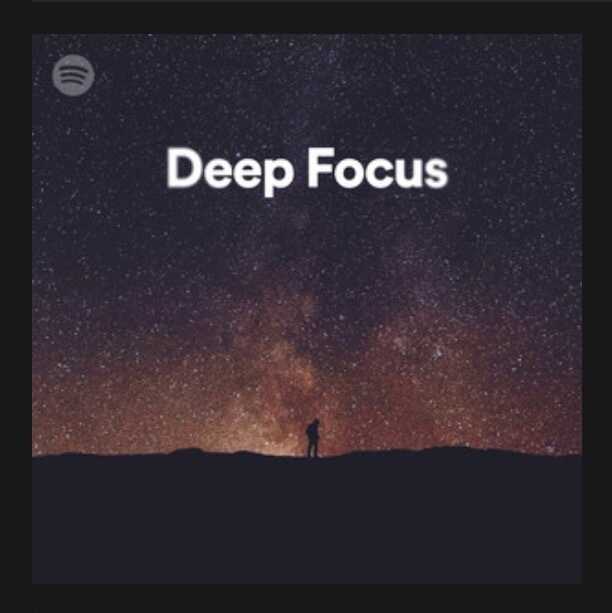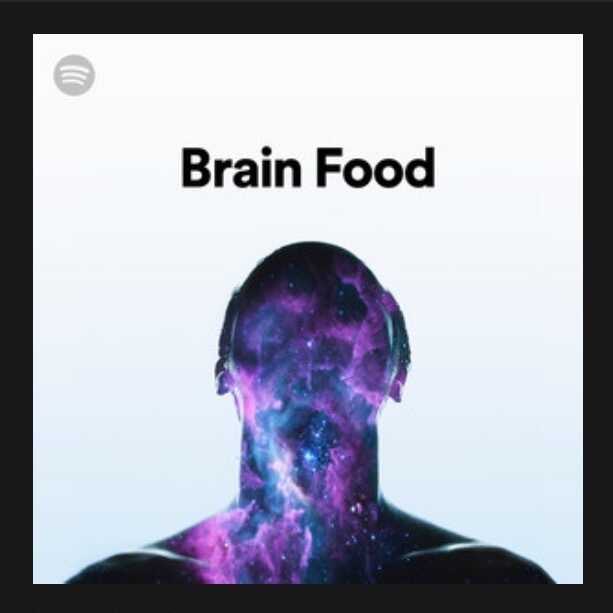How Streaming Has Changed The Music Industry

Grady Coppell/Getty Images

Grady Coppell/Getty Images
It'southward tough to recall a fourth dimension when listening to music — and making information technology — wasn't completely synonymous with streaming. The idea of filling an iPod up with carefully selected digital files almost feels similar a afar retention, though it wasn't that long ago that these kinds of players, and the digital library of songs you congenital through them, embodied the future of music. (For what it's worth, Apple still sells one.) These days, streaming services offer music fans a tantalizing premise: Instant, limitless access to music from all over the world and beyond history, for a minor monthly fee. Or for free, as long as y'all're cool with advertisements cutting into the experience.
These days, office of being an artist — from Acme 40 superstars to independent bedroom songwriters, the Bad Bunnys and Nobunnys alike — entails throwing oneself professionally and promotionally into these services. "Professionally, streaming has get crucial for the artists I work with, and information technology's get such a big part of what we do in terms of marketing our campaign and making certain that people know that it'due south on these streaming platforms," says Katie Garcia, who owns Bayonet Records and does A&R for Secretly Grouping. "It'due south crucial nowadays; it's a necessity."
The tantalizing premise of streaming has been a success story in many ways. Industry strategy house MIDiA Research notes that recorded music revenues ballooned to $18.viii billion terminal yr, a $2.ii billion uptick from 2017 — inside that, streaming was up 30% year on year, and climbed to $9.6 billion, in what they describe as "the engine room of growth" for the industry. In a 2018 yr-end written report, the Recording Industry Association of America (RIAA) touted the fact that "for the third year in a row, double-digit growth was driven primarily by increased revenues from paid subscription services including Spotify, Apple Music, Tidal, Amazon and others." The International Federation of the Phonographic Industry'south (IFPI) most recent Global Music Study revealed that in the Usa, streaming revenues steadily rose by 33.5% last year. (In 2017, that number was fifty-fifty higher: l%.)
Only, while streaming continues to evolve at a breakneck pace, the system through which artists are paid for the music existence listened to hasn't evolved in tandem — meaning that, as dissenters note, many artists are still paid piddling, later on services and labels take their respective cuts. Streaming payouts to artists vary wildly however, depending on whether they are signed to a major or independent label, and whether or not they're songwriters of an private tune, as well as the performers. And inside these situations, the terms of these contracts can brand one artist's pay stub unrecognizable to another's.
But beyond these contractual idiosyncrasies, the bedrock structure for streaming services' royalty payouts tilts the unabridged system towards those who, in some ways, need it least. Spotify and Apple Music's model for determining who gets what from their services is known as "pro rata," which means that rights-holders are paid according to market share; how their streams stack up against the most pop songs in a given fourth dimension menses. The people who hold the rights to the most listened-to tracks, and so, stand up to make the nearly. "The 'pro rata' model is perceived as being inherently objective and fair, however, it doesn't take into business relationship dissimilar user behaviors," says Will Page, Spotify's Chief Economist. "Arguably, it does produce an efficient outcome in that every stream is worth the same and information technology is relatively cost-efficient to manage."
That cost efficiency is outlined well in a 2017 study from Digital Media Finland, which found that pro rata streaming models tend to benefit the services themselves, who keep almost 30% of a subscriber's fee. The rights holders of the recordings, which include record labels, producers, and performers, split about 55 to 60% of the fee. Meanwhile, the rights holders of the vocal itself (the limerick) — which at one time includes composers, arrangers, music publishing companies and lyricists — see about x to xv% of that pie. Equally David Turner, a critic who writes the weekly streaming newsletter Penny Fractions and now works for SoundCloud, said in an interview with Slate last year: "So if you're signed to a major label, for every stream you go you're probably getting peradventure 12 or 15% from that if you lot're an artist." It varies, of course, simply Turner notes that while independent artists may not have to pay out to labels, they too don't take admission to the same kinds of resource — managing the nuts and bolts of an creative career — as an artist who signed to one.
Critics say the pro rata model disproportionately privileges top artists and labels, and leaves little chance for even midsize artists, such as a band like Khruangbin — whose virtually-listened-to songs take tens of millions of listens on Spotify — to get a fair shake. Also and importantly, fans have no say in the direction of where their subscription dollars caput. In parallel to the hope of "music for everyone" (as Spotify'southward tagline goes), a harsh truth has emerged: Endless working artists in the U.s.a. tin't conceivably brand a decent living in this new world.
While streaming is the music industry's most visible economic commuter these days, its problems are historical in proportion. "Capitalism has a office in this problem," says Henderson Cole, an entertainment chaser based in New York. "But I think too how our legal system is built is that instead of ordinarily rewriting something, they'll just build on it. And we've been putting Band-Aids on this for I don't know, 100 years? And so none of [the royalty system] makes sense... if a vocal is played on the radio, 100% of the royalties go to the songwriter. But if the same song is played on a streaming service, only about twenty% of the royalties go to the songwriter. Where does that come from?"
Artists confirm that these numbers tin can be murky. "You cannot get at bodily information, particularly fiscal information [from Spotify]," says the musician Damon Krukowski, who plays in the projects Galaxie 500 and Damon & Naomi. "No affair what they tell the states most our quantities of plays — which seem to be approximations, not down to the single ones — they do not tell y'all exactly what you're making. You can wait back through your royalty statements, but it'due south hard to do."
It gets particularly nebulous, too, considering the digital blind spots. Crossed wires and bad metadata take contributed to a "royalty black box" of unpaid money, thought to be somewhere at least in the millions. Some speculate that even those reported streaming numbers themselves might not even be entirely correct, either. Earlier this year, news broke that a criminal investigation is underway against Jay Z'due south high-fidelity streaming service, Tidal, following accusations from the Norwegian newspaper Dagens Naeringsliv that the platform had exaggerated listener streaming numbers for Kanye West'south The Life of Pablo and Beyoncé's Lemonade "to the tune of several hundred million false plays... which has generated massive royalty payouts at the expense of other artists," as they wrote in their written report. Under the pro rata organization, those allegedly false plays would affect the kinds of royalties other artists are making.
Every bit streaming has become a dominant part of being an creative person and a listener alike, musicians, activists and critics have also increasingly and vocally criticized the dominant streaming economy, and the purported inequalities that ascend therein.

A purposeful playlist from Spotify. "Continue calm and focus with atmospheric music." Spotify hide caption
toggle caption
Spotify
Money (for artists) aside, naysayers also point to the shift towards mood and purpose-driven playlisting instead of full-length albums or EPs as both an advertising tool and non working for every single artist. Nor does it benefit every kind of listener. "Their product is more valuable if people just listen more," says Liz Pelly, a contributing editor for The Baffler and journalist who covers streaming. "If people just don't stop streaming. Then in some ways, it seems to me that a consequence has been this situation where music that is being surfaced past the platform is music people won't turn off: This background feel, where music isn't really as intentional of a thing, and it'due south more than music that people could merely stream for hours and really not think about."

As a result, streaming isn't just irresolute consumption habits, but how people write music altogether — with songs becoming shorter and shorter, for case. The contained distributor CD Baby's DIY Musician blog suggests that if musicians want to optimize their music for the streaming age, they might want to explore changing the construction of their song to have the chorus hitting listener's ears outset, in the vein of Post Malone's "Meliorate Now."
"I really do experience like the flattening and watering down of the feel of musical customs and fandom is one of the biggest issues [of streaming]," says Pelly. "We're in this moment where artists on every level are expected to think this style that, in the past, would have been a way of thinking about artists that are gonna exist on the Superlative xl radio. And now all artists are expected to be beholden to the mechanisms of pop music in a sense... the idea that one platform could always serve all artists is something to really be scrutinized."
"That'southward some other thing almost streaming I discover so frustrating," Krukowski adds. "Nosotros're not developing as a customs — as digital producers and listeners — through these companies."
Alternatives take emerged that tin can, perhaps, offer a more equitable path to those whose livelihoods depend on it. "As listeners, nosotros have agency, and I think platforms like Spotify and other streaming services are really banking on people's requirement of everything being super convenient," Pelly says. "But existence fans of independent music has not, historically, been a super convenient matter, and if nosotros tin can forgo a little bit of convenience to back up economies that are a little bit more equitable for contained artists and artists in general, that'due south something that we should go along in mind." In recent years, other modes, including user-centric and stream-to-own models, have become a bigger role of the conversation.
"One-size-fits-all is a very rough, barbaric approach to music," says Mat Dryhurst, an artist and a instructor at NYU'south Clive Davis Plant of Recorded Music in Berlin. "And actually, the internet and music might be a whole bunch more exciting if artists were given the tools to make the experience of consuming their work every bit unique every bit, arguably, the work is in itself."
One culling streaming service that'south emerged in contempo years, Resonate, functions on a "stream-to-own" model with transparency in mind. Unimpressed by his experience trying to use other services as an creative person, musician Peter Harris started the Berlin-based visitor in 2015. It works past splitting the cost of a digital download into several streams; after listening to a song nine times, paying a small amount that slightly increases with each heed, the person and then owns information technology. The company is a co-op, and so anybody, from listeners to artists, has a say in profits and controlling; according to their website, Resonate says they "volition share any and all profits with consumers (listeners) and workers (musicians, labels, staff and volunteer contributors). Members will be able to trade their profits for more streams and downloads and/or withdraw as cash."
Resonate notes that they pay $0.006 per stream, falling on the high cease of what current streaming services reportedly pay out. (There's also a sliding scale, where y'all can see the estimated profit you might make as an artist through information technology.) The service, which includes the likes of highly regarded electronic artists and DJs such as Fatima Al Qadiri, Burial, and Kyle Hall, relaunched earlier this year.
Advocates also point to Bandcamp as an alternative model that'south dearest by the people who use it. On information technology, artists and their labels can direct upload their songs, and fans directly support artists they love, follow their work, and post gushing odes about their favorite tracks. Unlike Spotify and Apple tree Music, the service non merely enables listeners to stream songs, simply also allows both artists to set the cost for their piece of work and listeners to name a toll to own the songs. Information technology has an editorial arm, Bandcamp Daily, where music fanatics dish about nether-the-radar artists and scenes (on Bandcamp) flourishing around the earth, and newsletters that proceed yous abreast about what your favorite characterization's just released, and digital tracks and vinyl records that your friends have been into lately.
Compared to a behemoth like Spotify, Bandcamp is not dissimilar a city's independent record store compared to a Best Purchase (at least, back when it fifty-fifty stocked music) — a place that attracts a more engaged listener. "I call back if you're a fan, knowing that your money is going straight to the artist and supporting them, in that location's something really awesome about that, and that'southward probably what inspires people to pay more than for something online," says Garcia. But realistically, Bandcamp doesn't practice the numbers that Spotify does, in both subscribers and revenue. "Bandcamp, you can see each and every single penny where information technology came from and where it went," Krukowski says. "So financially there'south admittedly no mystery at all. Of course, the numbers are radically different. Spotify at this point is an of import part of our music income, and Bandcamp is non even so."
And while many independent musicians, artists, and critics have positive things to say about Bandcamp, and how its model allows for more than equity than anywhere else right now, they're hesitant to swivel the future of streaming on it. "My great optimism would be that more than people who have appointment with the archive, for example, or more of an accent on the kind of deep cultural aspects of music would think like that, rather than trying to pin their hopes on something similar Bandcamp. Which I completely like," says Dryhurst. "But long-term, I don't see it as being viable, information technology feels similar... retiring into your fantasies or something, to recollect that will e'er compete at the level of a venture monster like Spotify."
The user-centric model, an alternative to the pro rata model, also focuses on a listener's money going directly to the artists they listened to, and not to the unabridged pool of musicians whose songs were streamed in a given month. For example, if Megan Thee Stallion was your near-listened to artist in June, that means that your money would go to Megan — and non to, say, Lil Nas X, whose "Old Town Route" is the nearly-streamed song of 2019 and so far (by far). Spotify's Volition Page argues that the complexity of the user-centric model "would arguably come at an increased price — and the value of a stream would be more volatile, and less predictable, as well." Others see information technology equally perhaps a more ethical fashion to stream music, and the idea has picked upward steam equally of late: The French streaming service Deezer has been said to be exploring user-centric licensing. It likewise exists in platforms such every bit Patreon, where fans give their money to support a specific creative person and might periodically receive music, a podcast, or another artistic output through their subscription.

The downside of Patreon-esque ventures, every bit Krukowski points out, is that it only works for specific kinds of artists, specially those who are hands-on and accept preexisting fanbases. Non to mention the fact that sometimes relying on these solutions-oriented tech endeavors doesn't e'er end up shaking out: The crowdfunding service PledgeMusic appear its bankruptcy back in May, and it however owes scores of artists and labels, many of them independent, hundreds of thousands of dollars. "There'south no single model, in other words, that's going to fit for everybody," he says. "And I think that's part of the trouble also with streaming right at present, is that we're assuasive this narrowing of possibilities of how many models we have to cull from."
Krukowski has ane radical idea for a potential futurity alternative streaming economic system: Doing away with the royalty organisation altogether. "I recall it sounds kind of kooky to people, but I seriously wonder: if we only gave up the idea of owning digital streams at all, of trying to attach them to copyright, if nosotros'd be better off as musicians and as listeners," he says. "Now it would mean, obviously, a loss of income streams insofar every bit we're getting whatsoever from digital music right at present, only what I would suggest to people is, we don't know how that digital realm is going to pay us notwithstanding. It's still not working. It's working for a tiny little handful of creators correct now. That's not a solution. That's a problem."
Cole instead wonders if bringing music streaming fully into the hands of the regime—which would also mean building a different kind of royalty organization altogether—might make information technology a more equitable organisation for everyone involved. For years, he's been working on a proposal called the American Music Library, a taxpayer-funded streaming service that at once would act as a repository for all recorded music and besides would guarantee free access to all listeners across the United States, not unlike the public library arrangement. That would entail establishing a new royalty system that would requite artists and songwriters a "stipend royalty" paid out direct. In his proposal, Cole estimates that "the American Music Library would be able to offering somewhere in the neighborhood of $0.01 per Artist master stream and $0.0075 per Songwriter composition stream," which is considerably higher than any payouts currently offered by major streaming services.
"If you did a plan like this that helped more artists and more songwriters to have a sustainable class of life, that would be a huge heave for ... the economic system," Cole says. "Too information technology's a huge task creation mechanism: If there were a lot more than artists that were working full-fourth dimension doing that, they'd hire more than managers, they'd hire more music video people." Since this service would exist managed through the government, information technology poses several steep challenges — one of them being that anything deemed "obscene" wouldn't qualify, which would disqualify a massive contingent of important, innovative music. Given that the service would function as an archive, that at once means a footstep forward for preservation efforts. Simply every bit Cole notes, that would too potentially allow for music that'due south considered hateful, or made by calumniating people, to exist on the platform also.
Others abet for moving offline and looking more holistically at culture cultivation writ large. Along with Holly Herndon, his partner in life and artistic endeavors, Dryhurst is involved in a handful of different projects that challenge the paradigms of music consumption in the streaming economy. 1 of his ideas involves moving away from platform participation, and towards exploring grouping equity in existent-life spaces, fostering both artists and fans who converge together, brand music, perform and build communities around shared creative endeavors — which would too stimulate local economies. "You could try and each individually sell your tape, or you lot could instead gather together and endeavour and go everybody in the world who cares about [say] ballroom music to own, or at the very least crowdfund, the infinite that makes all of this possible," Dryhurst says. "That takes the focus kind of away from trying to sell files and trying to scrimp indicate-one cent per play on some s****y streaming platform and more than looking at: 'What is the fundamental infrastructure necessary to keep a civilisation going?' And, oftentimes fourth dimension, space is pretty much the respond to that — space to record, space to play." The idea is an echo of the cocky-reliant arroyo that touring punk and hardcore bands took throughout much of the 1980s — making a concerted bespeak to play at spaces that welcomed fans of all ages in their hometowns and beyond, and creating communities around fanzines and booking local shows themselves.
Pelly sees a way frontward in offer resources for artists to have the tools to continue creating into their own hands, in the manner that the nonprofit Cash Music allowed for open-source coding, every bit well equally supporting online as well every bit off. "I would love to see artists and contained labels and communities take the work of establishing those relationships more into their own easily, and to build websites on their own," she says. "Where those types of recurring, subscription-based support systems could exist more on their own terms instead of having these platforms being in the middle of this relationship... As well buying stuff from artists directly at the merch table, supporting independent record stores, postal service ordering from labels that you're a fan, that kind of stuff is besides of import. And it'southward these things that seem really niggling that do add upwardly to comprising a more meaningful relationship with music and art."
Ultimately, having more models out in that location means more options, and further room to experiment with possibilities that don't still exist yet — a disquisitional office of an ecosystem that allows for mainstream sounds to flourish aslope more than experimental avenues. "The perpetuating of the logic of one-size-fits-all ultimately is damaging to the very thing that makes music or culture on the margins powerful: That it presents an actual alternative," Dryhurst says. "While I'm not optimistic that such minor initiatives will topple Spotify, I am optimistic that it might create something else entirely." Krukowski adds: "My own personal sense of what works, what would be helpful and to music listeners, is the more platforms the better. The more possibilities the amend... If you just keep going downward this road, and you just don't allow for any other models to develop, or alternative models to develop, and then that's all we're going to get. We're simply going to keep going down this same trajectory. And this trajectory, it's non hard to see, is actually bad. It's harmful to both the creative side and the listening side."
Paula Mejía is currently the culture editor at Texas Monthly, and her work has appeared in the The New Yorker, The New York Times, Rolling Stone and other publications. She is also a co-founding editor of Turning the Tables, NPR Music'southward serial about centering women and non-binary musicians in the musical canon.
Source: https://www.npr.org/2019/07/22/743775196/the-success-of-streaming-has-been-great-for-some-but-is-there-a-better-way
Posted by: pullumthempling.blogspot.com

0 Response to "How Streaming Has Changed The Music Industry"
Post a Comment